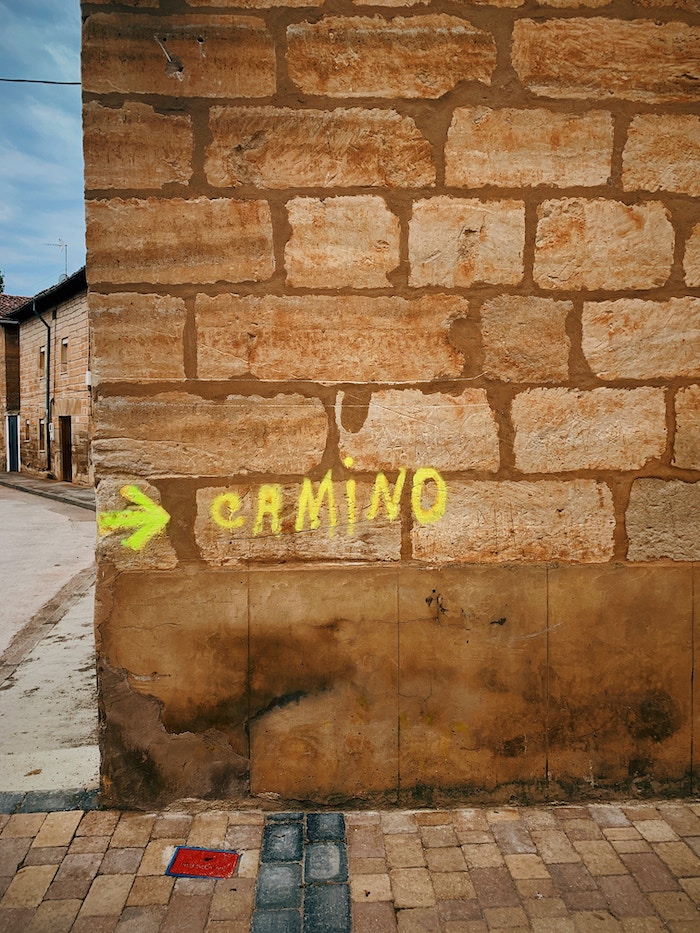Traveling the world can be incredibly exciting–but it can also be terrifying. I’ve been on a few major adventures already, and they’ve taught me a lot. Here, I share how I’m planning my next major trip and will offer some strategies that will hopefully help you prepare for your international adventure.

First, a little background on my upcoming trip. In July, I’ll be heading out to Southeast Asia for a few weeks. I have a few hostels and buses booked, a newly obtained yoga teacher certification, and a working holiday visa in Australia. After my last backpacking trip, I told myself I would plan less…and I didn’t break that promise.
So here I am, taking a month off at my parents’ house before the big trip/move. Buying the ticket and applying for the visa was all fun and games, but weeks away from the trip, reality is setting in. New adventures and new opportunities are exciting, but it would be silly to think that the entire trip is Instagram-worthy. (Especially since I broke up with my boyfriend when I left Austin.) I’m using this month to prepare for the trip, including preparing my mental health for whatever is ahead. It’s always a good idea to allow yourself plenty of time to prepare–you may not need it, but you’ll be grateful if any unexpected hitches come up!
5 Tips for Traveling the World–Planning Edition:
1. Read and Research Customs and Etiquette – Wherever your travels take you, you’ll likely find that the customs vary a bit (or a great deal) from what you’re used to. Being familiar with the etiquette of the places you plan to visit will help make your travels smoother.
For example, when I worked at Disney World, I was told to never point with my index finger, because that was considered rude by many cultures. The smallest gestures or words can make a huge difference when you are interacting with people in a new culture. Learning these minute differences can help to provide context in a situation where we may feel unsure or uncomfortable around new people. Knowing these nuances can help to make all social interactions easier.
Here’s a few random facts I learned about etiquette and customs in Southeast Asia:
- Singapore has a ban on chewing gum.
- Showing the bottom of your feet, or allowing your feet to be higher than someone else, is considered rude. (Not sure what this means for my acro yoga future…)
- Wrapped gifts are expected for hosts, but the color in which you wrap your gift sends a different message. Different colors are acceptable in different countries.
Whether you are exploring a new country on the other side of the globe or a new state on the other side of the country, doing research and reading about the area where you’re traveling can help to set your mind at ease and better understand what you are seeing once you get to somewhere new.
2. Don’t Forget to Budget – Being honest with yourself (and travel companions) about what you’re able to afford/willing to pay for is a must for keeping your travels as stress-free as possible. I learned this the hard way. Without going into too much detail…a lack of a budget severely threatened my last backpacking trip. So I’m taking control of my finances with a budget. Budgeting also comes with a bit of research and planning, but knowing where I have wiggle room (and just how many Thai massages I’ll allow myself a week) will also help to set my mind at ease while I’m planning my itinerary and making my next moves abroad.
When budgeting, look at up-to-date travel guides and blogs to establish a sense of what your day-to-day costs may look like. (And don’t forget to research current exchange rates!)
3. Cultivate Healthy Mental Habits Well Before Traveling the World – For me, this involved studying the Ashtanga Primary Series. In March, I completed yoga teacher training. During our ten weekends training, I was introduced to Ashtanga. This is a beautiful practice, but let’s be real…it also kicks your ass. The Primary Series of Ashtanga is a set series of poses that can take over two hours when completed in full, but variations that last for 30, 45, or 60 minutes are also available. The practice is meant to be memorized and done six days a week.
Rather than searching for, traveling to, and paying for yoga studios in every new city I visit, I plan on making this practice a part of my daily routine. I’ve started by practicing at home, as often as I can. Even if you have not received training in Ashtanga, developing a yoga flow, set of poses, or a set time for meditation that you complete a few times a week will help to keep you centered and engage in something familiar while you’re in a new place.
4. During the Preparation/Planning Process, Focus Only On What You Love to Do – Because planning a major trip can be extensive, it’s important to limit the number of extraneous things you do during your free time. Not only will this free up your time to properly plan, it will also help with the last point–taking care of your mental health.
Among researching, switching my money to a credit union, and preparing the logistics of my trip, I’m making sure to take time for myself to meditate every day and take life a little easier. After working 60 hours a week for almost two years to afford this trip, I’m only freelancing to sustain me throughout my last month of preparation. Balancing work, play, and planning has required me to say “no” to some more lucrative opportunities, but it’s all considered in the budget.
5. Have an Open Dialogue with Your Travel Buddy – I am fortunate to be traveling with my best friend for six weeks at the beginning of my journey. He lived with me for two years in college, and we’ve seen each other through the best and the worst. We are able to have an open dialogue about our hopes, fears, and goals for our trip. By telling him exactly what I’m worried about, and what my goals are for the trip, I can rest easy knowing that if I get nervous or put one adventure over another, he knows exactly where I’m coming from. This conversation also allowed me to verbalize my goals and ambitions for the trip. If you have a travel buddy, I suggest you have an open conversation with them about your anxieties and hopes.
Traveling in a group is not always easy. (To be fair, traveling alone isn’t always easy, either.) There are many different personalities to navigate, and everyone has a different idea for how the trip is going to go. Although you may not always get to know your hostel mates or the people on your tours on the deepest level, it helps to make an effort and talk to the people you’ll be traveling with beforehand. You can better avoid situations that will make someone in your group uncomfortable, and you’ll have a better understanding of when the other person needs to take a break.
Whether you’re traveling on your own or with a group, you are never alone.
What are your favorite ways to stay calm and collected while traveling the world?
Also by Megan: How I Backpacked in Europe for Three Months Eating Vegan
I Got Rid Of My Stuff To Travel The World—How It Feels To Minimize Your Life
Related: 4 Ways To Nix Travel Anxiety & Globe-Trot Like A Wellness Jetsetter
Get more like this–sign up for our newsletter for exclusive inspirational content!
__
Photo: Pexels




